The Yamaha MT-10 needs no special introduction. With the four-cylinder in-line of the R1 to power it, it confirms its name of “Master of Torque”. But According to Yamaha, the new generation of MT-10 2022 aspires to “take off” the Hyper Naked philosophy with more power, better behavior and even more emotions.
Starting from the engine, the CP4 (as Yamaha calls it), which has undergone major upgrades to increase power and torque, in what the Japanese company defines as the “The most technologically advanced engine ever worn on a Yamaha naked”. The offset-mounted titanium connecting rods of the R1 have given way to steel, while the crank inertia is increased to better match the character of the bike.
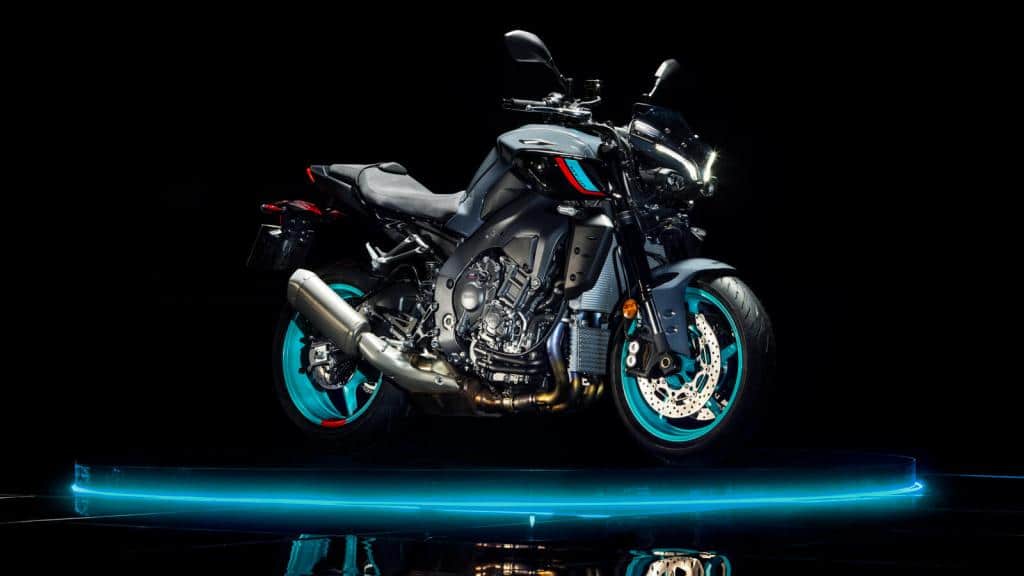
One of the novelties for 2022 concerns the planning of the inition, to do yes that power between 4,000 and 8,000 rpm becomes smoother At the same time, the intake and exhaust pipes have been redesigned. The triple advantage is compliance with Euro5 standards, improved fuel consumption and reduced carbon dioxide emissions.
Particular attention was paid to the sound emitted (and not only) by the MT-10 engine, redesigning the air intake. Iwata engineers designed a new airbox to change the soundtrack of the asymmetrical crank arm with three different lengths and sections. Each input also sounds in different “octaves” and is designed to fill the motorcyclist’s ear cups on the full scale, but especially in the mid-range between 4,000 and 8,000 rpm. For this reason the grids that are placed in front of the right and left of the tank have been used as “Sound amplifiers”, so that this is tuned and reaches the pilot more decisively.
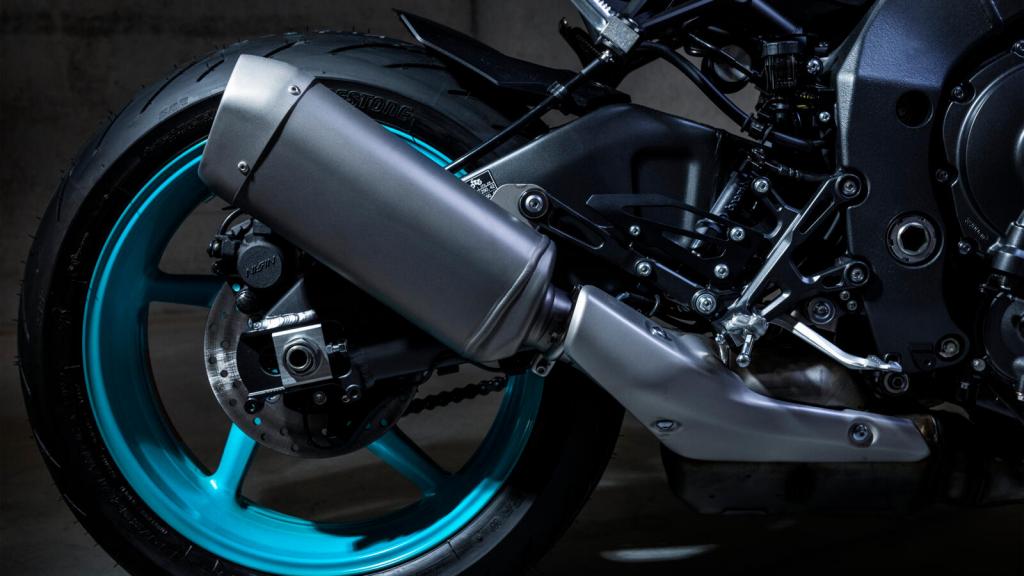
The titanium exhaust is also one of the novelties of the MT-10, with less weight and particular attention, also in this case, to the sound it releases.
Yamaha MT-10 2022, the design also changes slightly
For the 2022 version of the MT-10 Yamaha has also made changes to the exterior design of the motorcycle, which does not however neglect the aggressive appearance of its predecessor. The “face” is redesigned, with two LED headlights that offer a softer beam at their ends. Above them are positioned the daytime running lights also LED, while the plastics have changed shape.
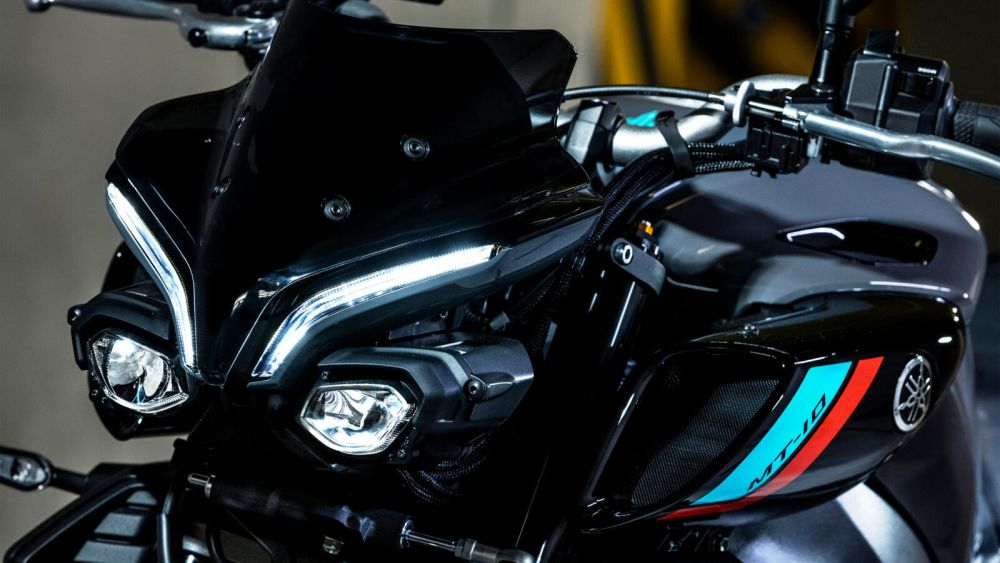
The air intakes remained on both sides of the tank but with a larger surface, while the rear LED lighting body became smaller following the philosophy of simple aggression.
The so-called “ergonomic triangle” (handlebars, sills, saddle) did not escape the renewal, but Yamaha did not provide more details on the changes. The tank lid has a smoother surface for a better feel when tightened by the rider’s knees , also helping to shift weight in curves. In the saddle, in addition to the shape, the foam has been modified to increase comfort.
To the brakes was added the Brembo radial pump, the same as the R1, for a better feeling and information
From the point of view of electronics, the MT-10 has the ability to adjust the YVSL (Yamaha Variable Speed Limiter), so that the rider does not run the risk of exceeding the speed limits, or setting his own limit on unfamiliar paths. New is the 4.2-inch digital TFT screen (coming from the R1), with the menu navigation selector on the right, while on the left there is the “Mode / Select” switch with which the various intervention levels are selected. of the electronic device.
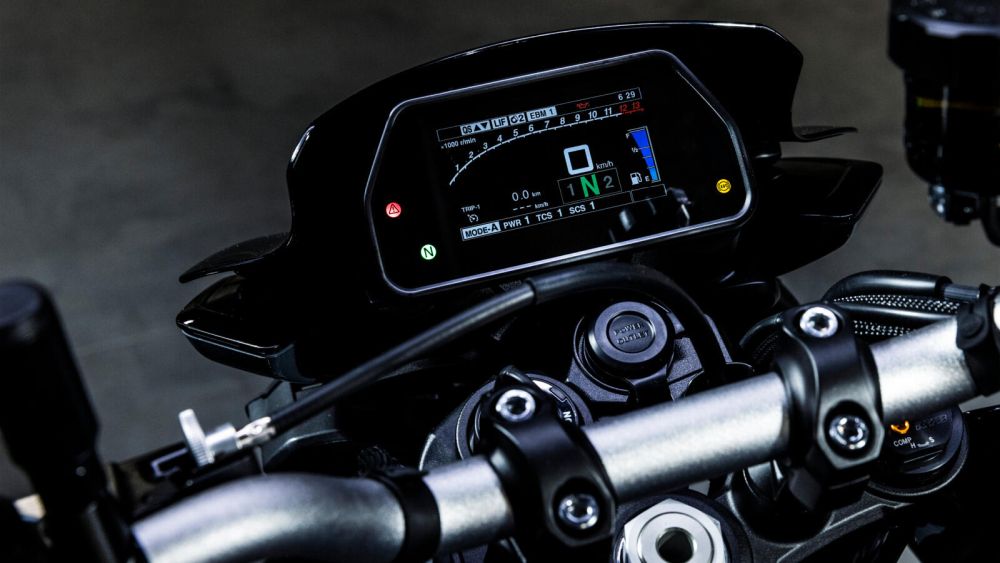
A new position sensor was installed in the electronic gas (ride by wire) to offer better control to the driver during acceleration. There are also four Power Modes to choose the performance you want. The PWR-1 is intended for sporty driving and track days, the PWR-2 and PWR-3 have a smoother response, while the PWR-4 is suitable when reduced traction is required, such as when driving on roads. wet.
Of course, the MT-10 also has a six-axis IMU, the same one that was developed for the R1, with less volume and weight. The electronic equipment of the new MT-10 includes the Lean Sensitive Traction Control as Yamaha calls it, the Slide Control system that adjusts the sliding level of the rear wheel, the LIF system to avoid the lifting of the front wheel, the EBM that regulates the engine brake on two levels which can in any case be deactivated. To these is added the Brake Control which is essentially ABS when cornering, while there are also four preset modes of the YRC (Yamaha Ride Control) oriented to different driving conditions that are also configurable according to your needs. It starts with “Mode A” for sporty driving, followed by “Mode B” for a wide range of conditions, while “Mode C” is intended for city driving and ends with “Mode D” for difficult conditions.
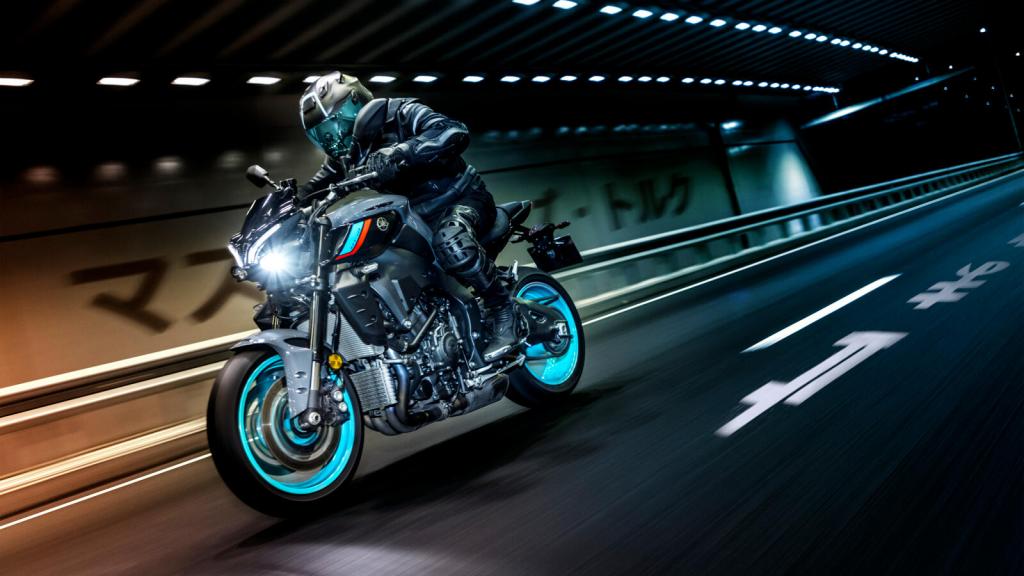
As for the Deltabox chassis of the MT-10, it has no changes compared to the previous generation, while the fully adjustable suspensions provided by KYB have changes inside to improve their operation.
The new MT-10 will go on sale from February 2022 (prices have not yet been announced) in three colors: Cyan Storm, Icon Blue e Tech Black.







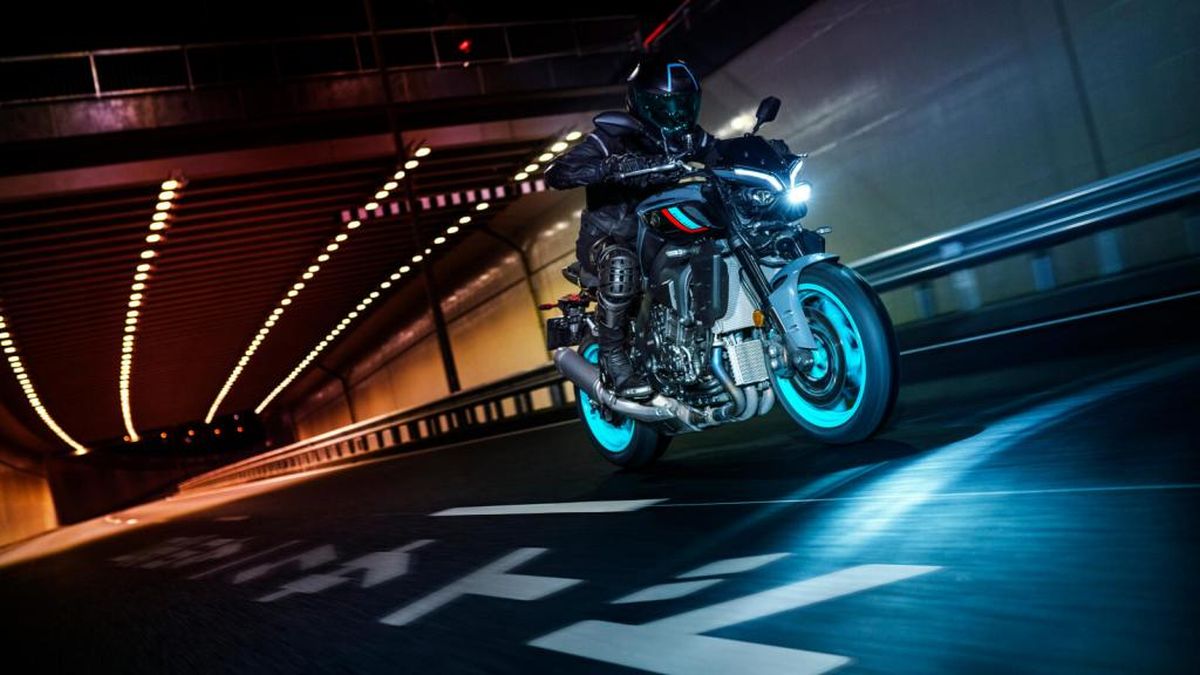




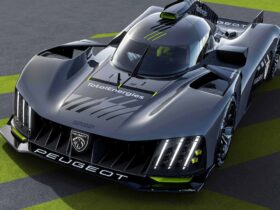
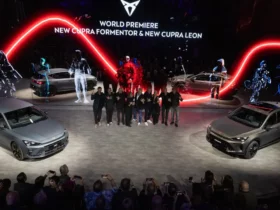


Leave a Reply
View Comments